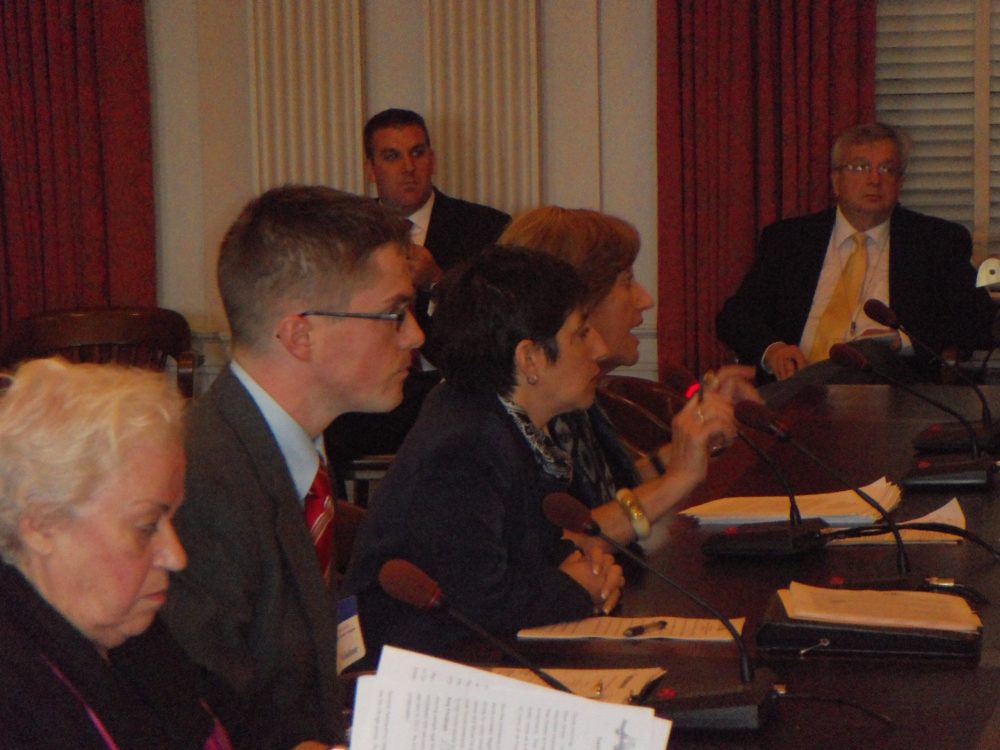
The intent of the funds was clear: Keep people in their homes; help struggling neighborhoods; and do so in a way that is right for your state.
It’s now eight months later and too many states are failing families, senior citizens, neighborhoods, and their local economy.
According to a just released report by Enterprise Community Partners, $977 million (38%) has been dedicated to housing, neighborhood, and foreclosure related activities; $989 million (39%) was diverted to the states’ general fund for non-housing activities; and $588 million (23%) remains unallocated.
At least three states—Oregon ($29 million), Florida ($334 million), and Texas ($135 million)—have yet to decide what to do with all or most of their money. Most other states have either decided or sent strong signals as to their intentions.
At least 30 states will use a good portion of the funds to keep hard-working families in their homes and/or address neighborhood blight that drags down home values and local economic growth. These states are funding housing counselors and community non-profits working directly with borrowers in danger of foreclosure, supporting legal aid programs to help those in foreclosure and victims of mortgage fraud, funding homeless programs, or supporting loans for refinancing. Michigan and Ohio are using substantial amounts of money for demolition of abandoned structures that have become local economic cancers.
The remaining 10 or so states have diverted large portions, if not all, of their funds to fill budget gaps that will return next year after the settlement money is gone. Using settlement dollars in this way is foolish, unfair, and short-sighted. California received by far the single largest payment—$410 million—and every penny will get lost in the general fund abyss as opposed to being used to help those who were defrauded or communities that are suffering.
Other states that have decided against applying the funds as originally intended:
- Georgia, which despite being among the hardest hit, is using all of its $99 million for economic development;
- South Carolina, which used $10 million to give tax incentives to large corporations and put the rest of its $31 million into its general fund;
- Missouri, which used all of its $40 million settlement to fill a cuts it had made to higher education;
- New Jersey, which used creative accounting to put its money into the general fund;
- Arizona, which is using half its $100 million to plug a budget hole and is being sued by local advocates and homeowners as a result.
Eight states wasted most of their fundson other types of spending such as economic development, business incentives, and balancing state budgets: Idaho (96%), Indiana (66%), Maine (64%), Mississippi (57%), Nebraska (88%), Utah (83%), Virginia (89%), and Wisconsin (82%).
These are not tax dollars, but are purposely intended to address the foreclosure crisis and should be used to keep people in their homes and prevent additional foreclosures.
Two and a half billion dollars may seem like a lot of money, but compared to the foreclosure crisis, which affects all 50 states, it’s only a drop in the bucket. To have an impact, the funds must be targeted directly at the economy’s housing sector. Unfortunately, states that have diverted or misspent the money are diluting the nationwide effort to drive economic recovery and help homeowners regain their footing.
The banks agreed to this settlement because of the real damage they inflicted across America. It is only right that these funds be used to help the damaged parties—the families, senior citizens, and neighborhoods that have been ravaged by foreclosure.
States that do not use these funds to solve the foreclosure crisis are making a mockery of the settlement and depriving affected citizens of the help promised by the settlement.
(Photo: NACEDA Director Frank Woodruff testified at a joint legislative hearing of the New Jersey Assembly Housing and Local Government and Financial Institutions and Insurance Committees. The panel spoke on the Christie Administration’s use of federal foreclosure settlement funds. Pictured from left to right: Marilyn Askin, chief legislative advocate, AARP; Frank Woodruff; Staci Berger, director of policy and advocacy, Housing and Community Development Network of NJ; and Phyllis Salowe-Kaye, executive director, New Jersey Citizen Action and National Housing Institute board member.)






This was a settlement in a suit lodged over widespread abuses on ordinary citizens—not some fraud committed against the state governments, but against the people in general. So any settlement money that someone is able to extract from the banks for that reason can reasonably be construed as drawn against their ill-gotten gains, money rightfully belonging to the very citizens who have been defrauded, correct?
What’s happening in the states that have diverted this money away from some good-faith effort to address the specific housing problems directly created by the banks’ crime wave is a transfer, then, of taxpayers’ money into the coffers of the state governments. It isn’t being described as a tax, but doesn’t it come to about the same thing? Money is taken from taxpayers by banks, and then they’re compelled to turn it over, but to the government, not their victims.
Citizens’ money given over to “big government” to be used however the government sees fit. Might as well have been a tax.